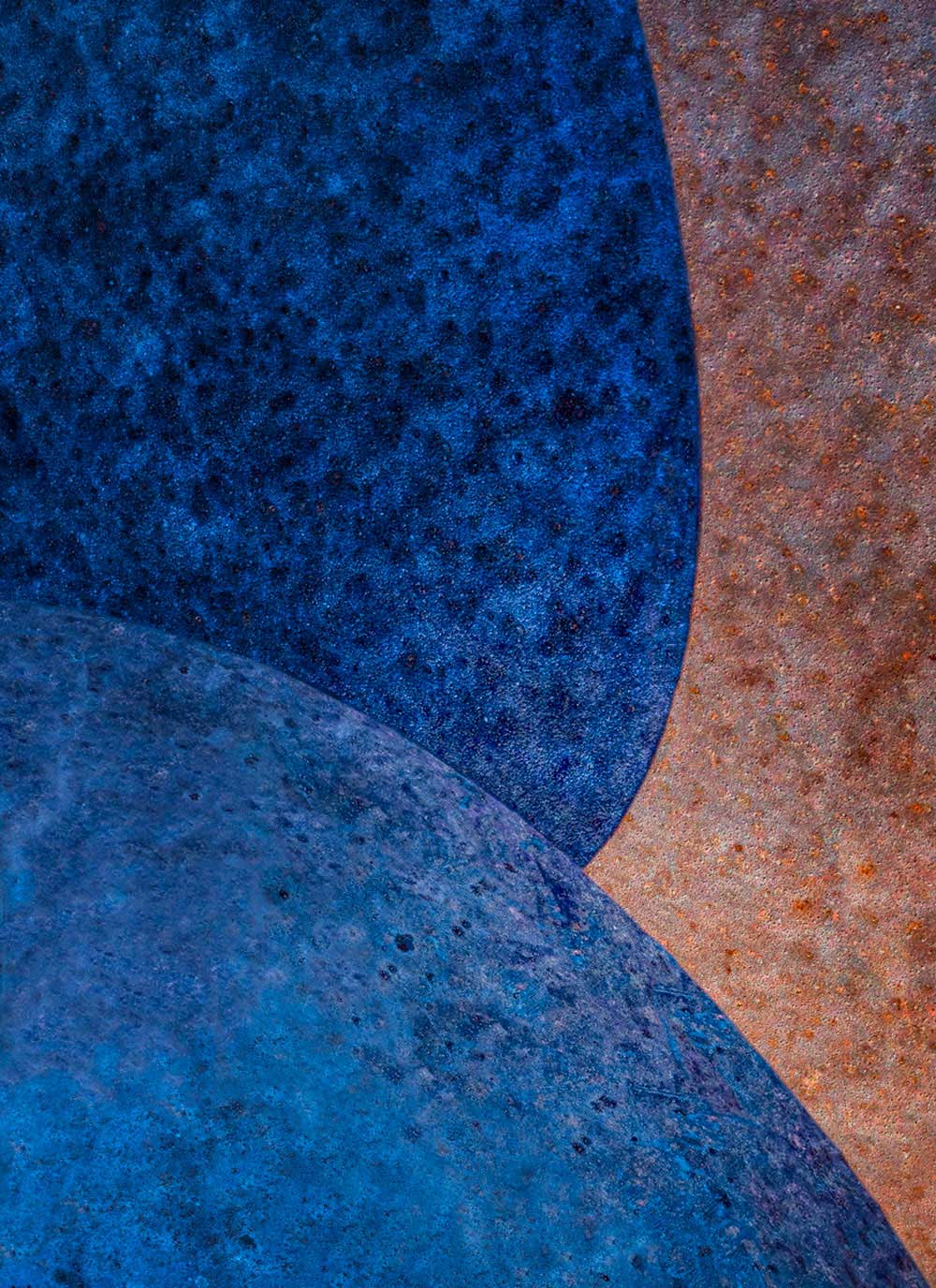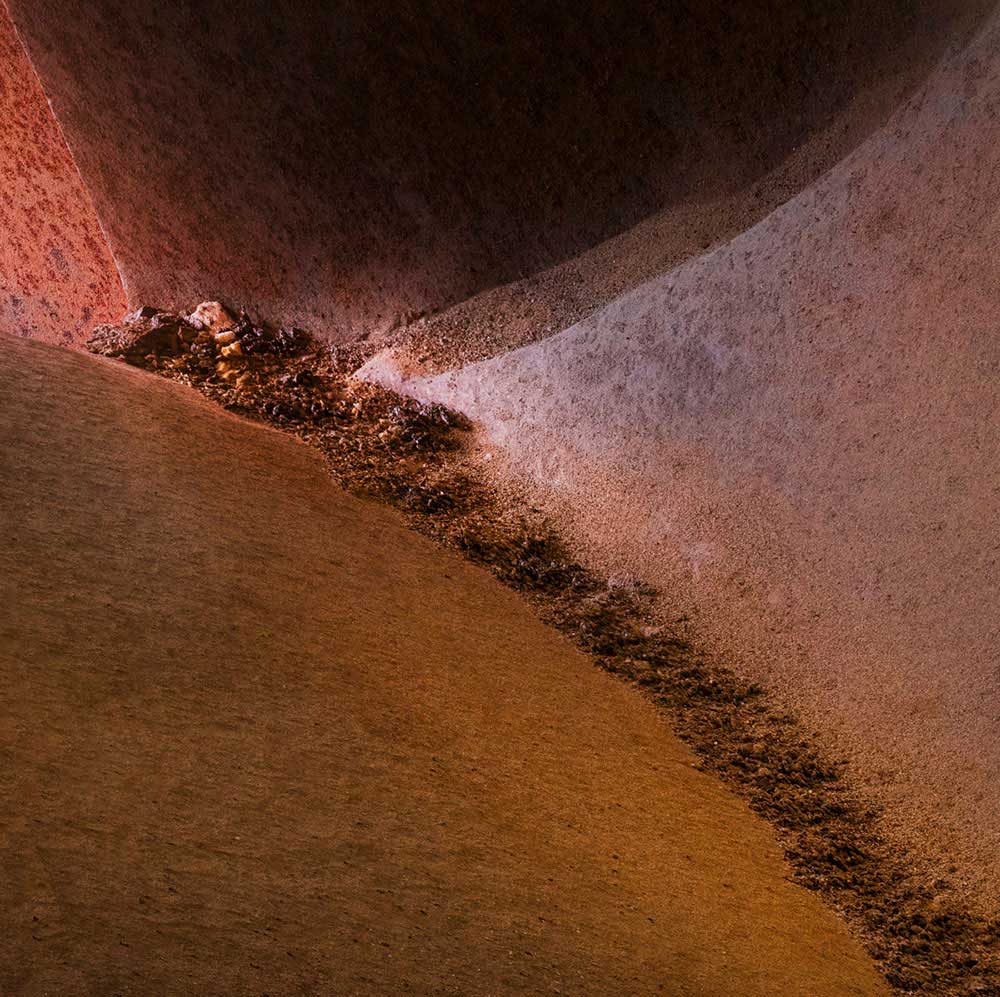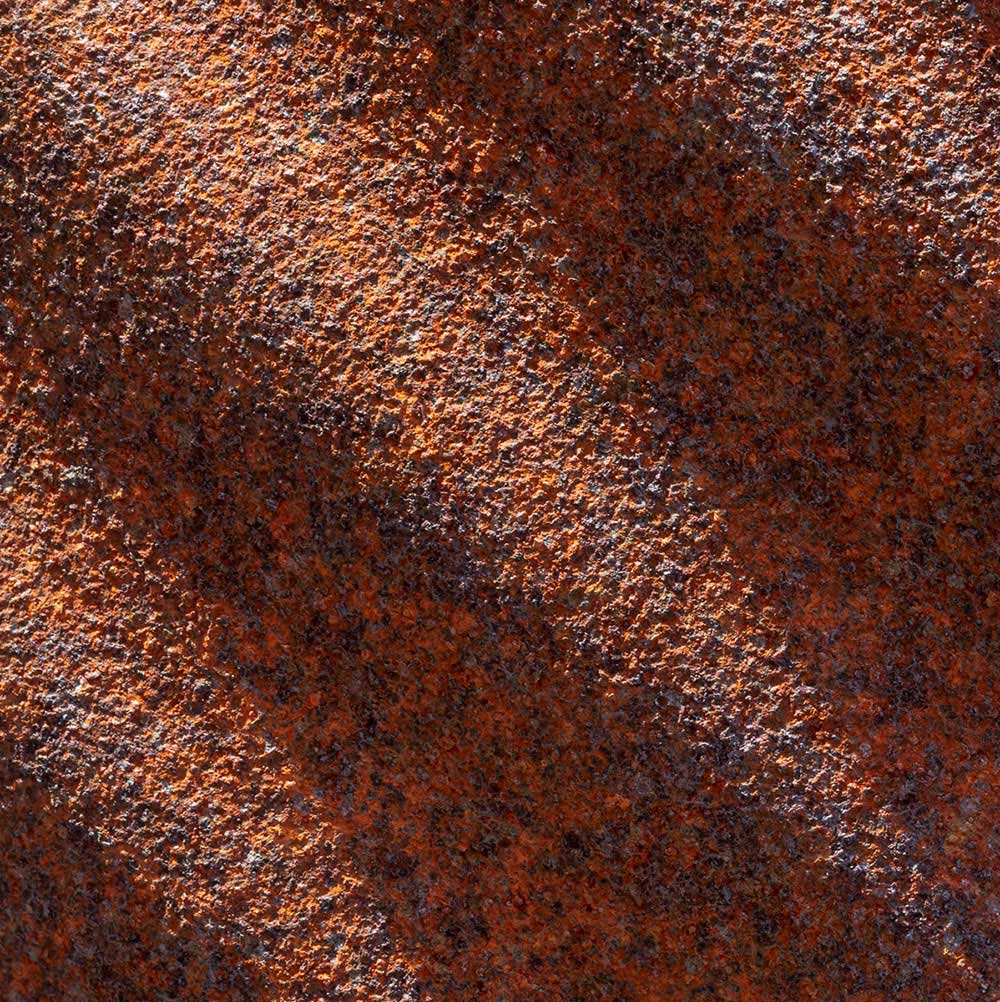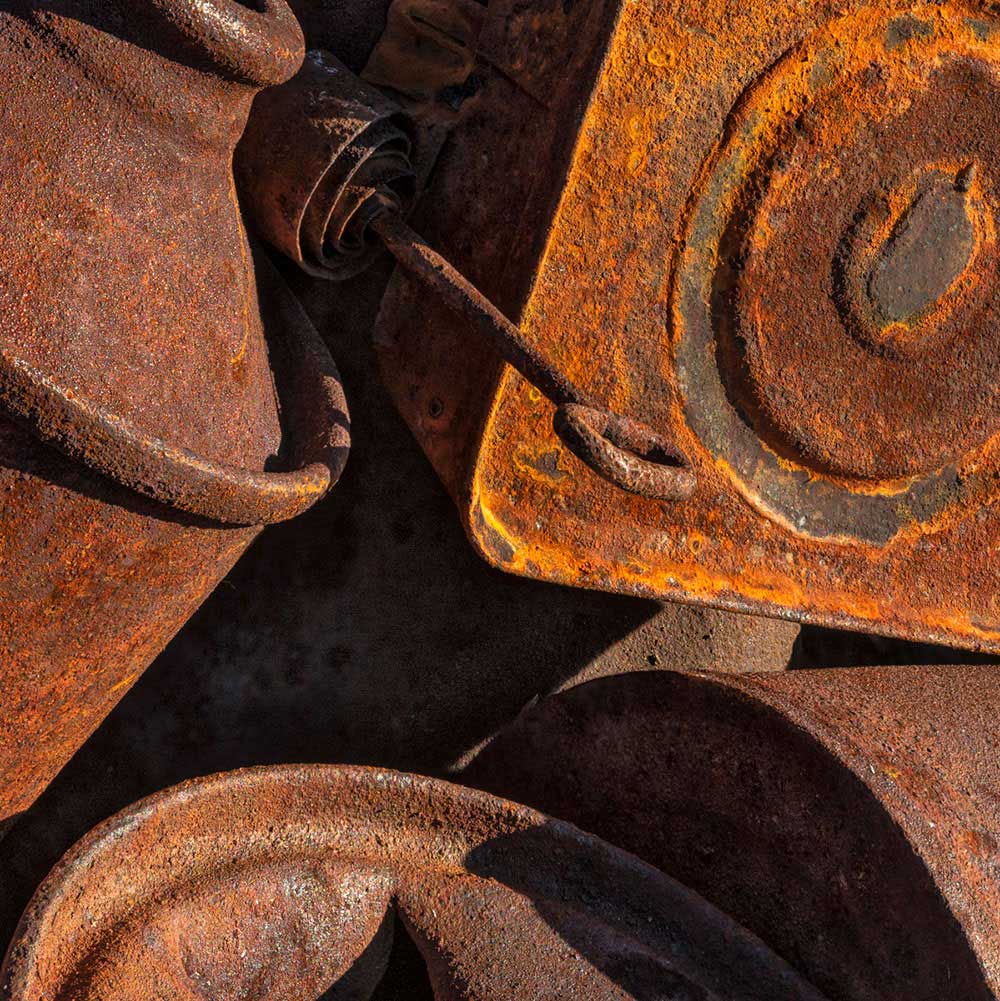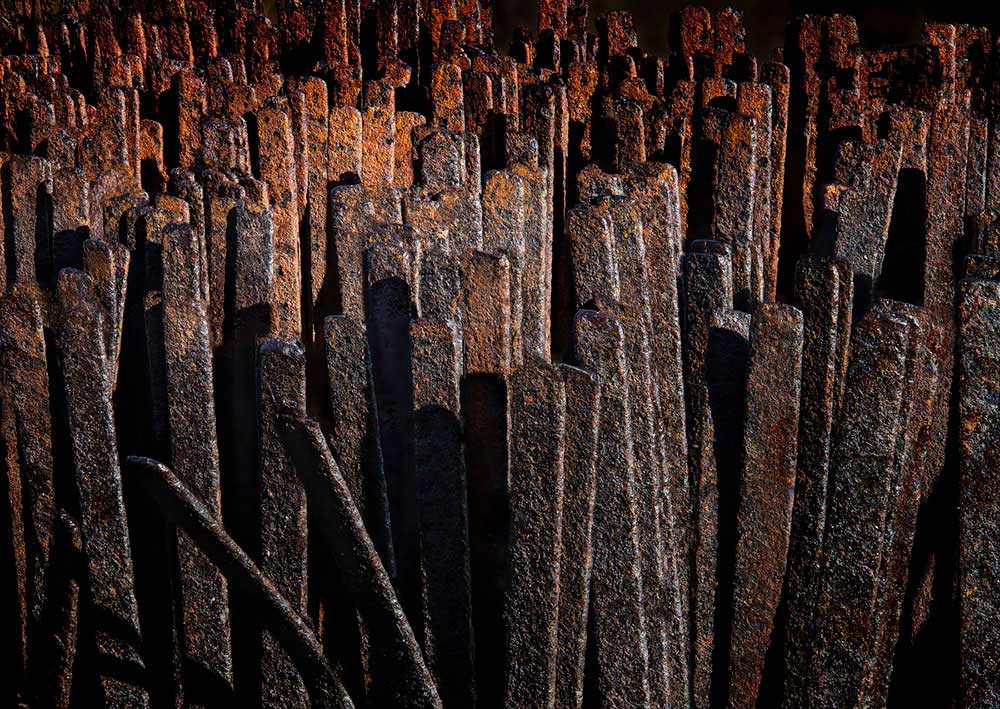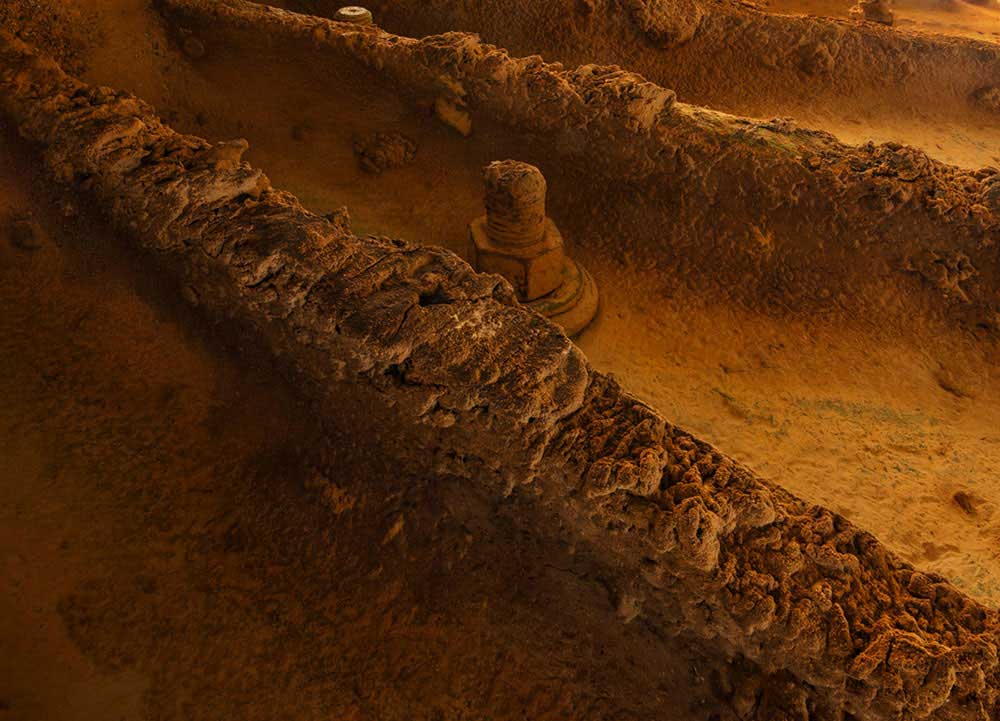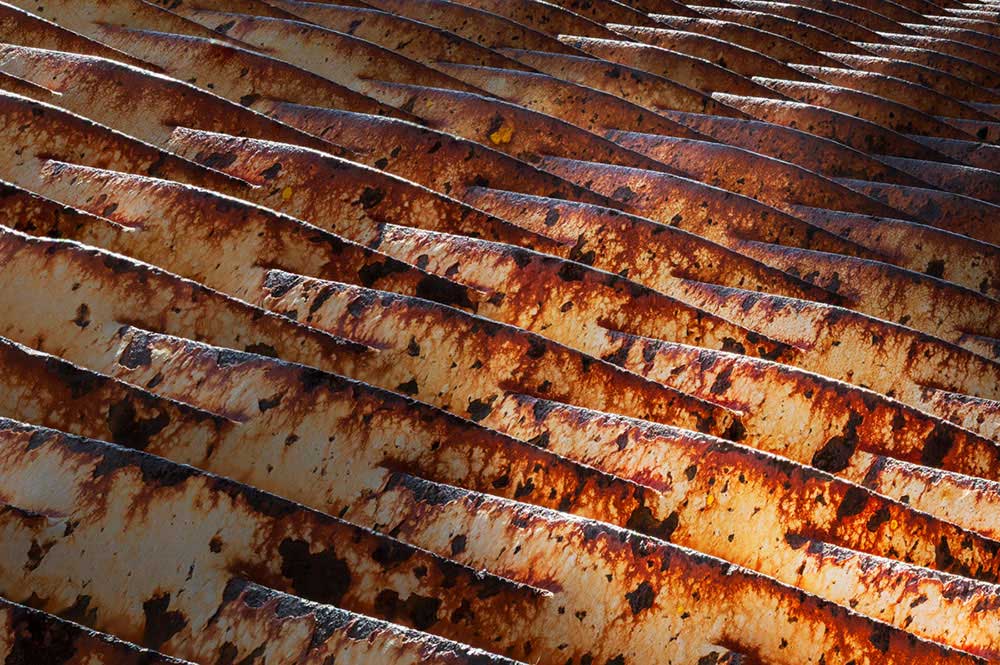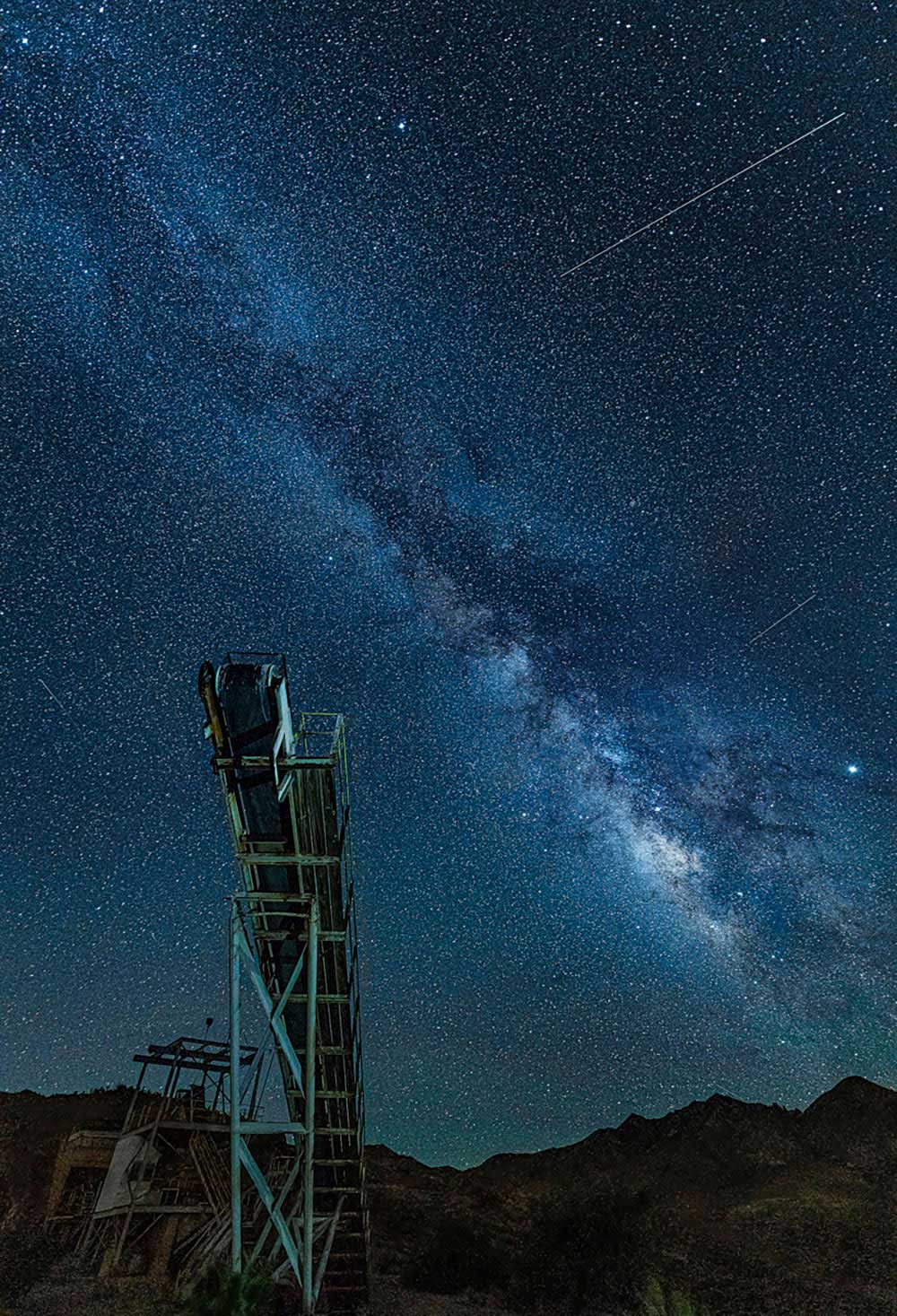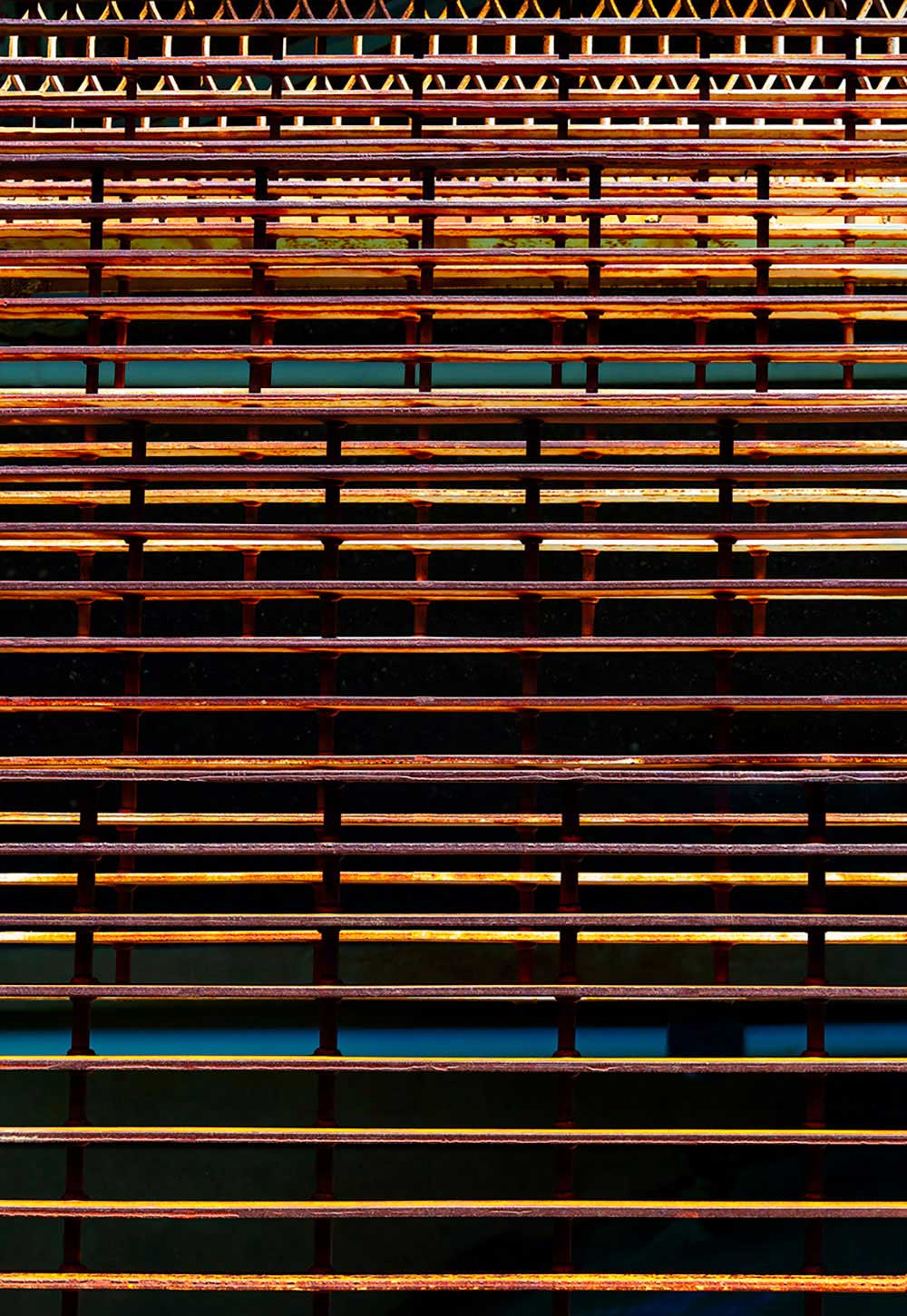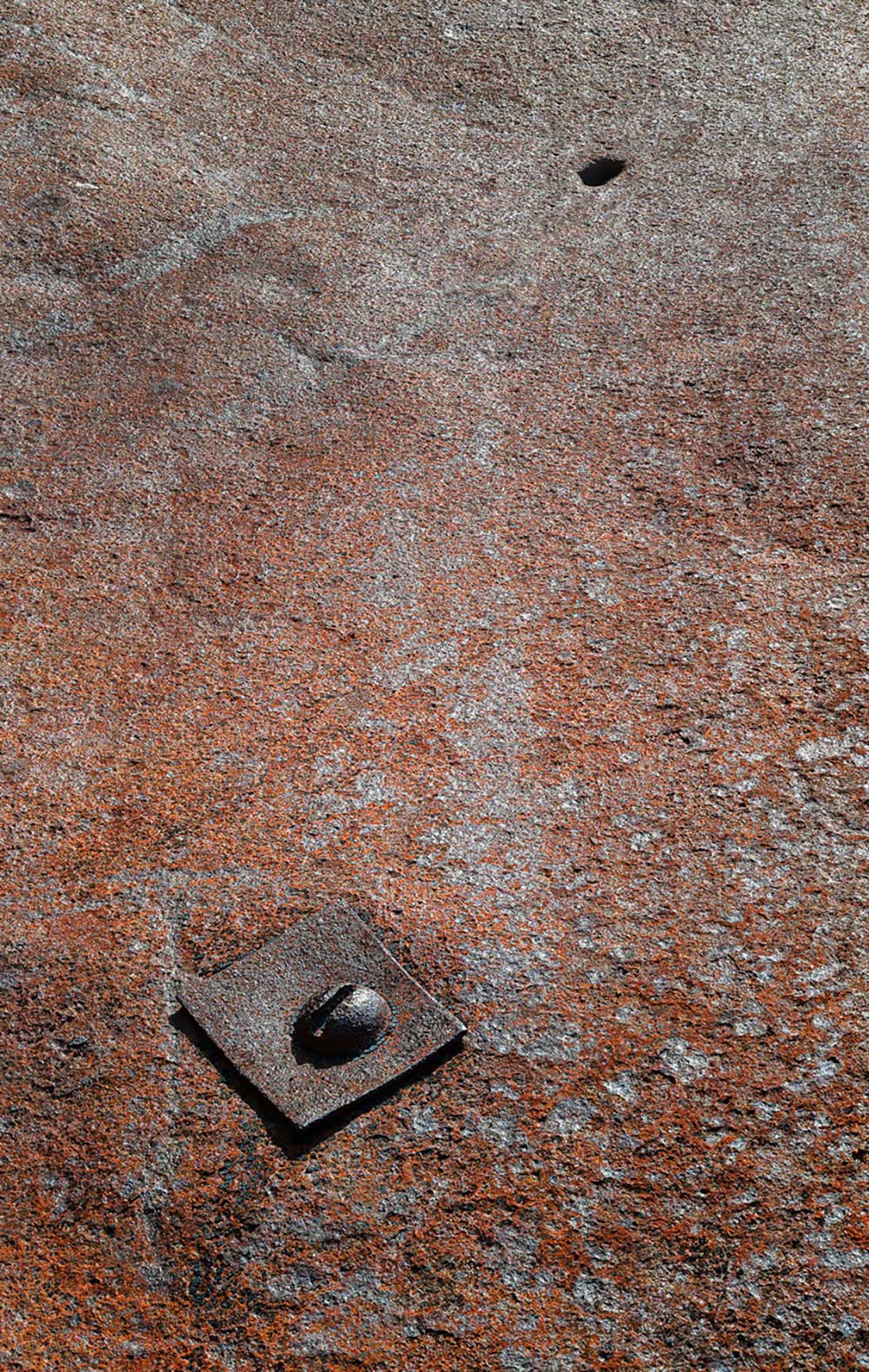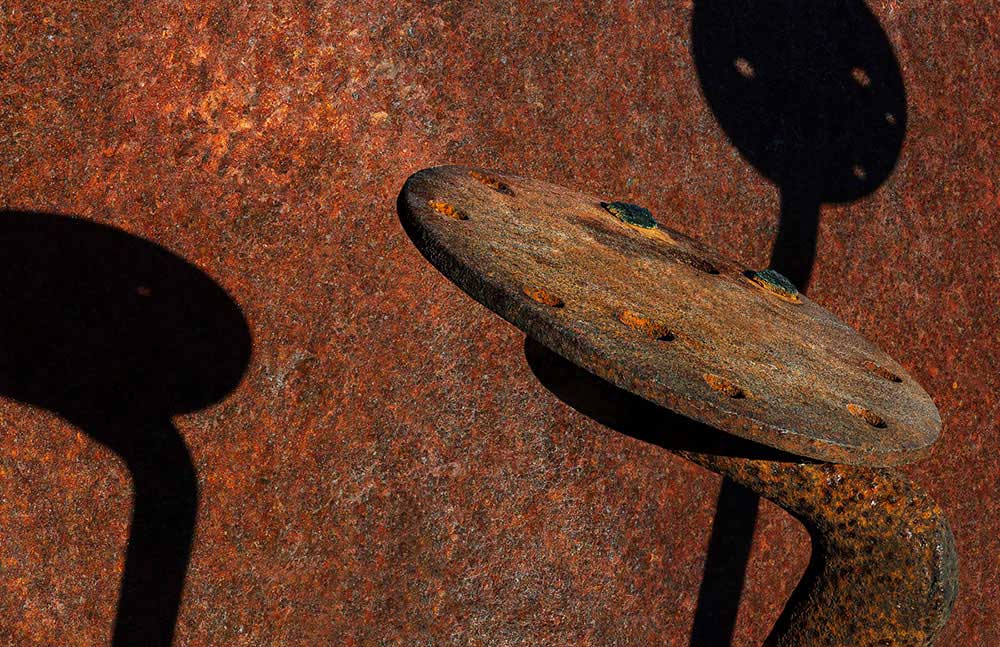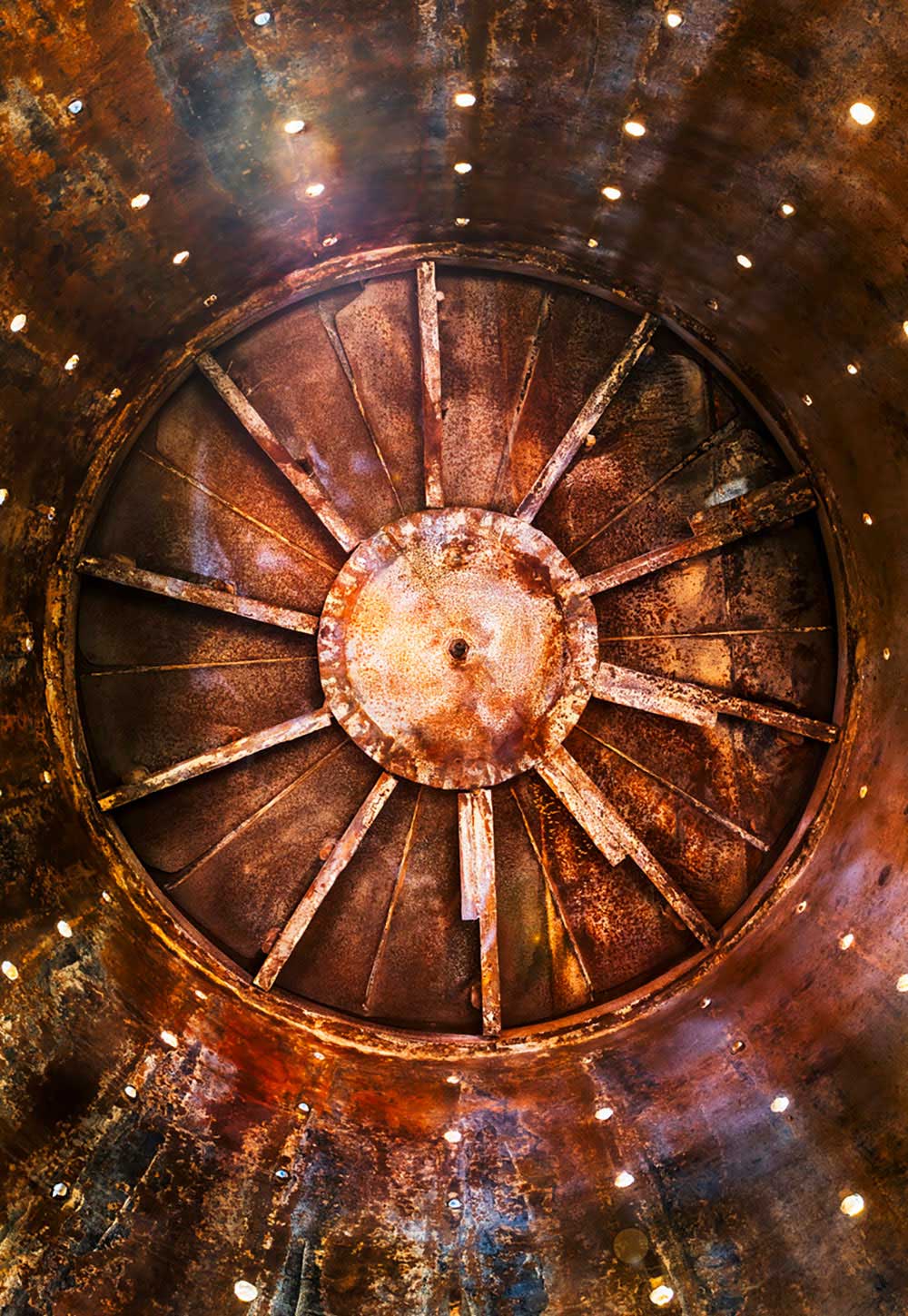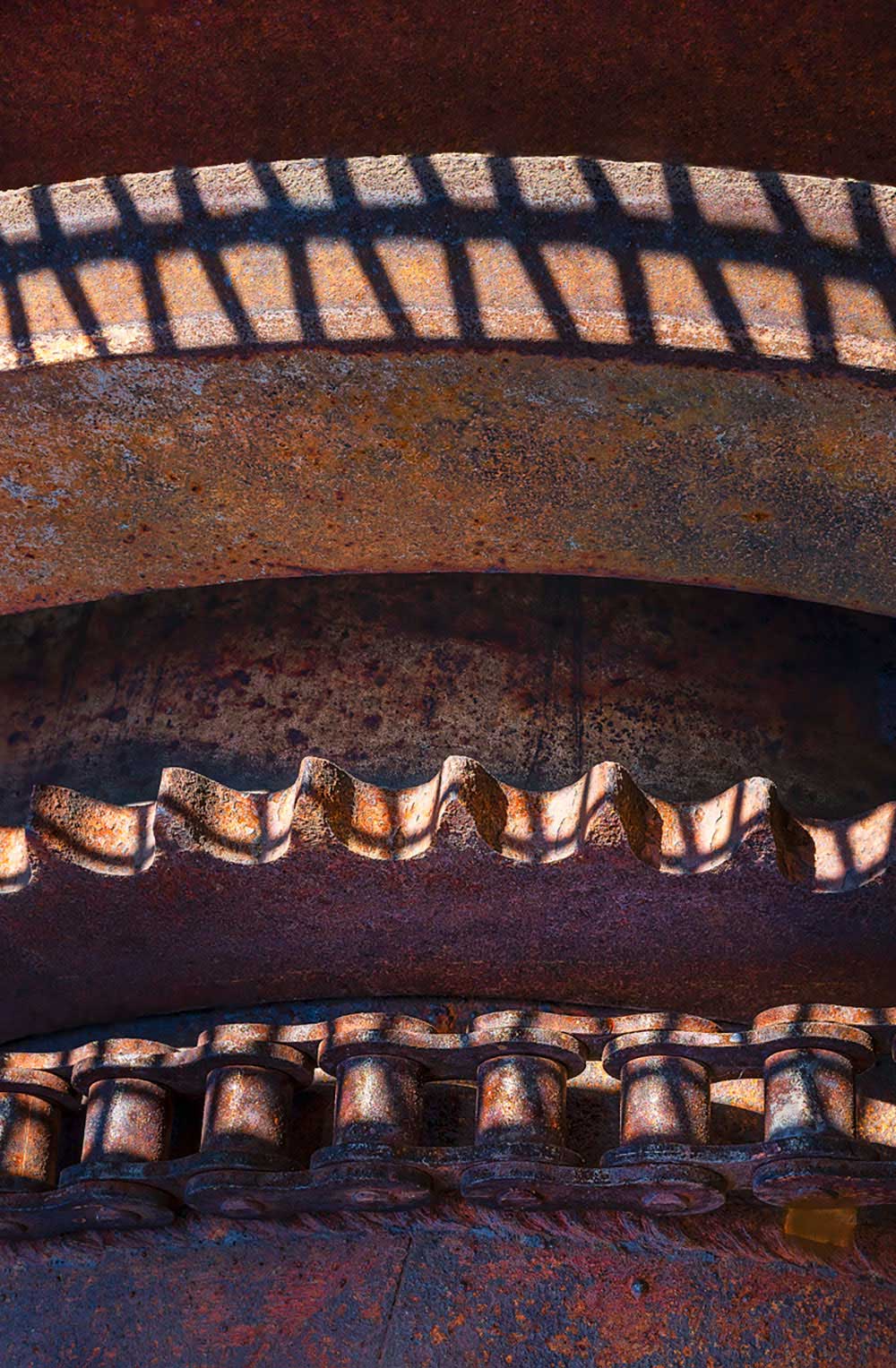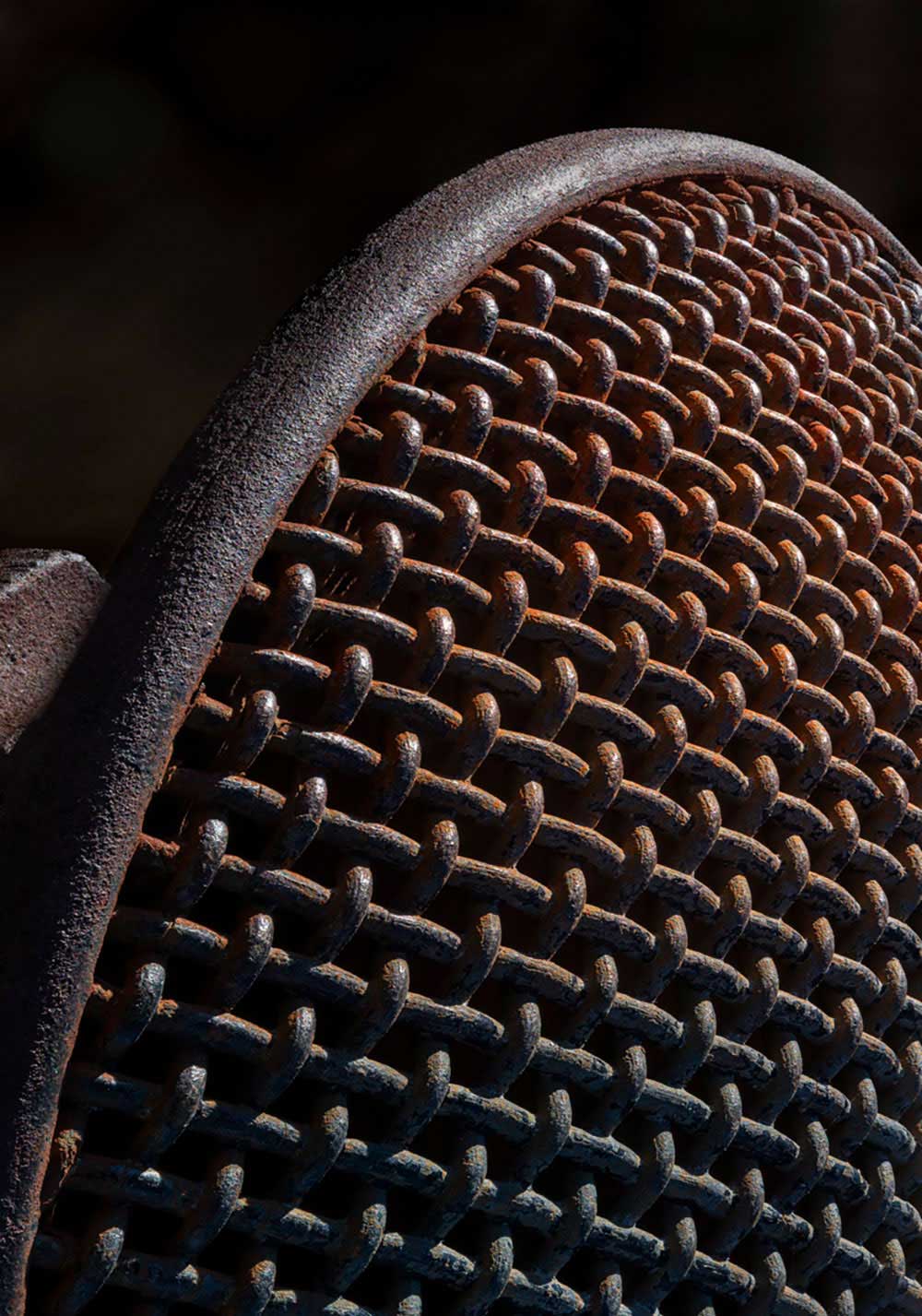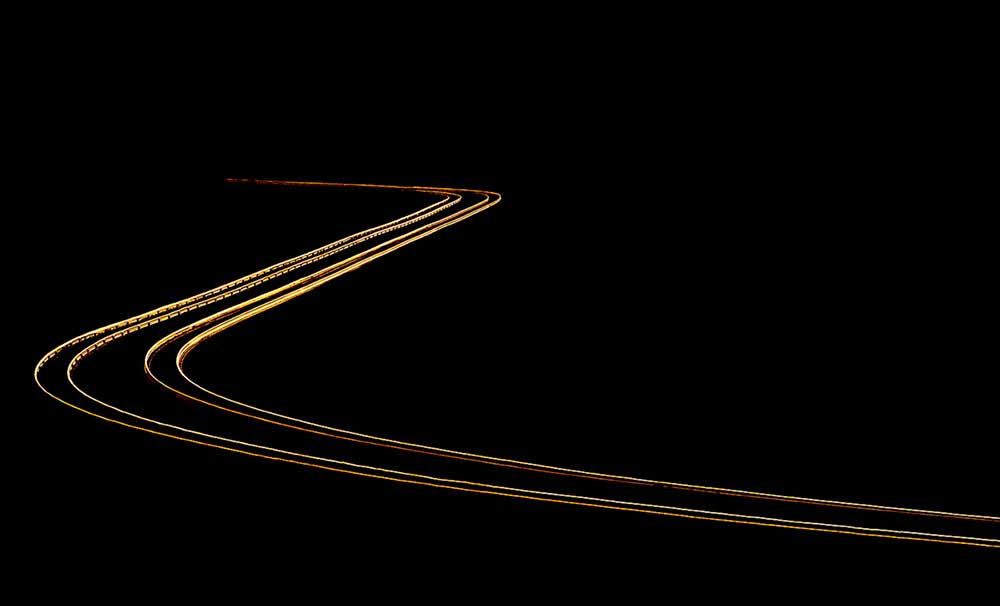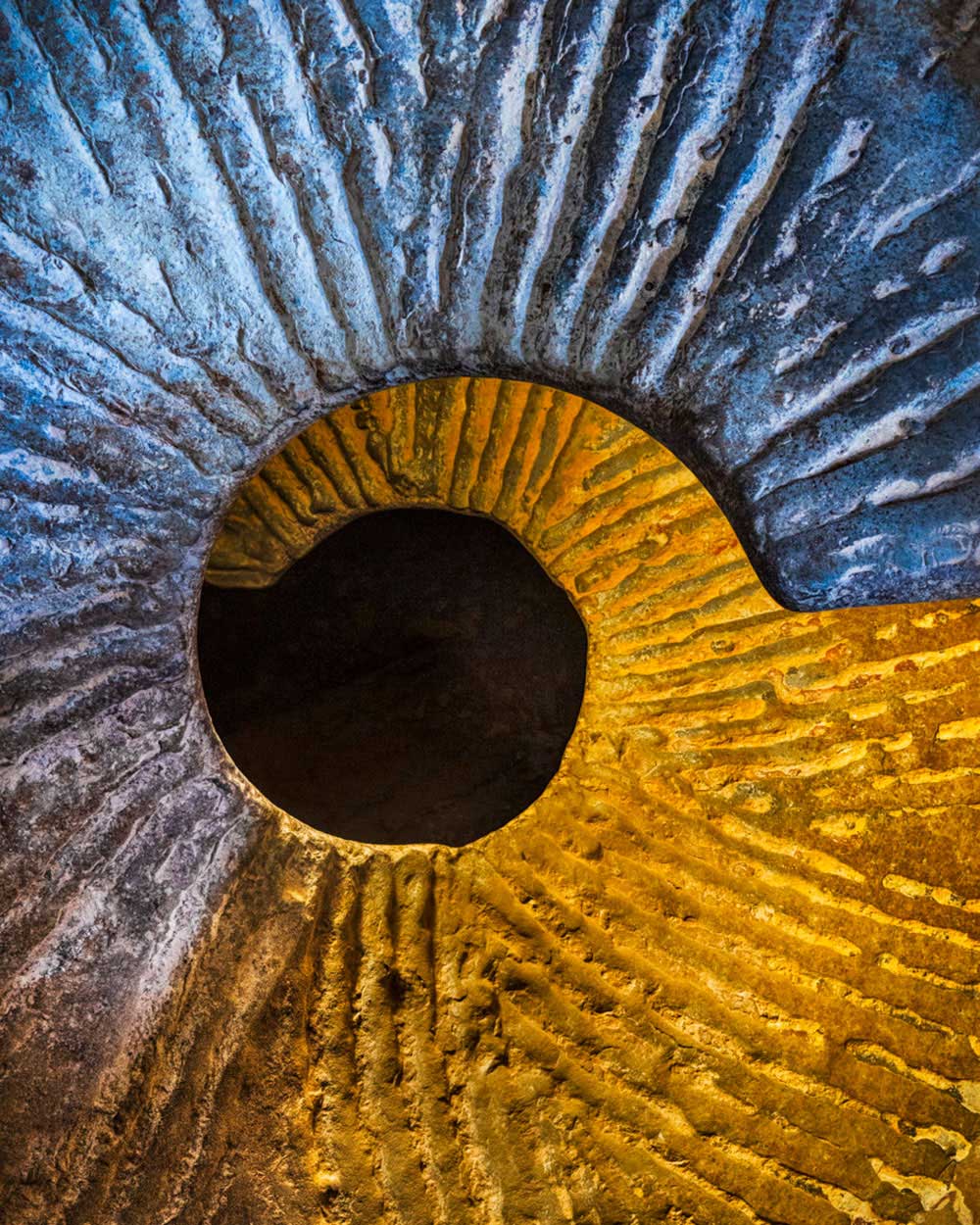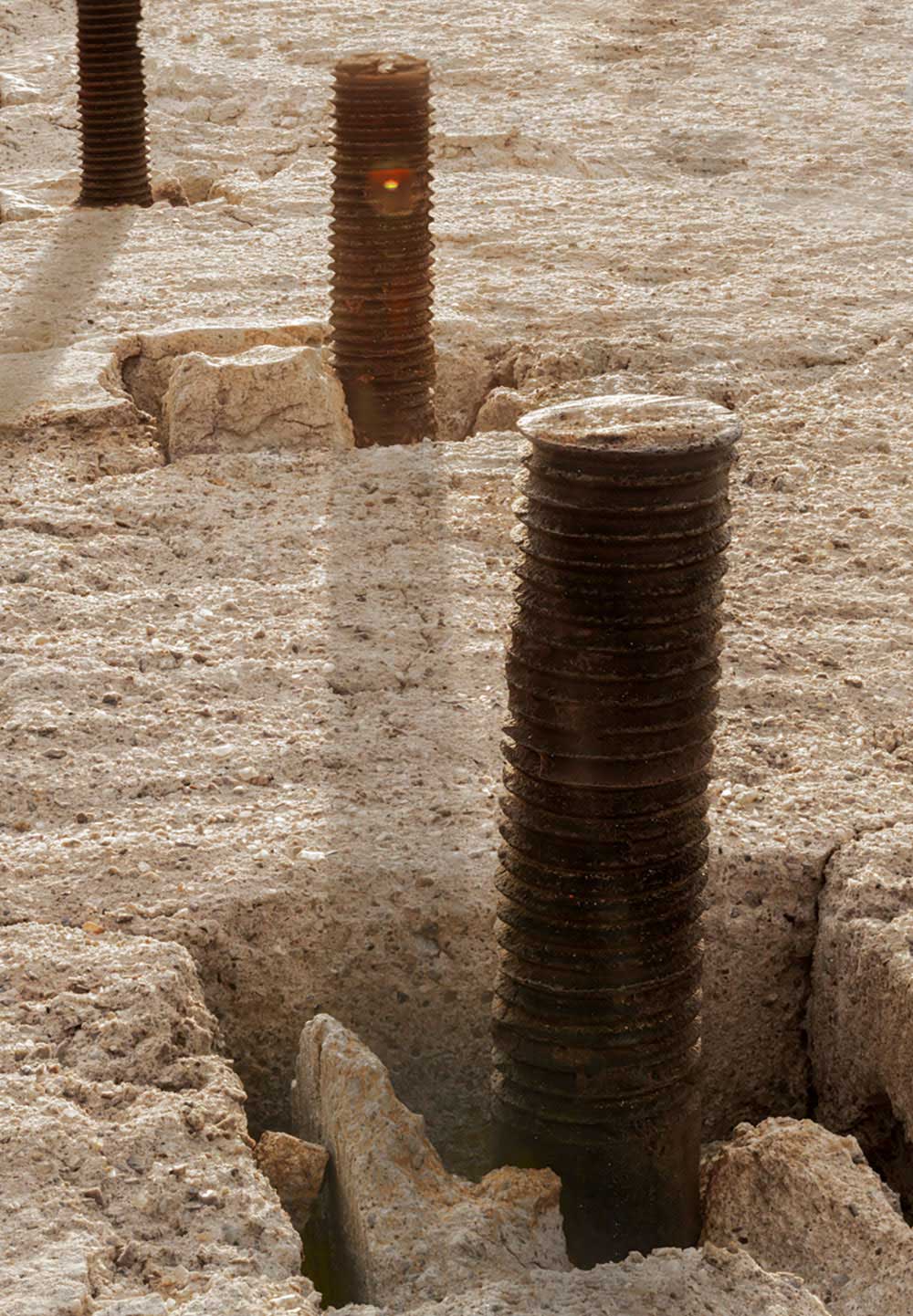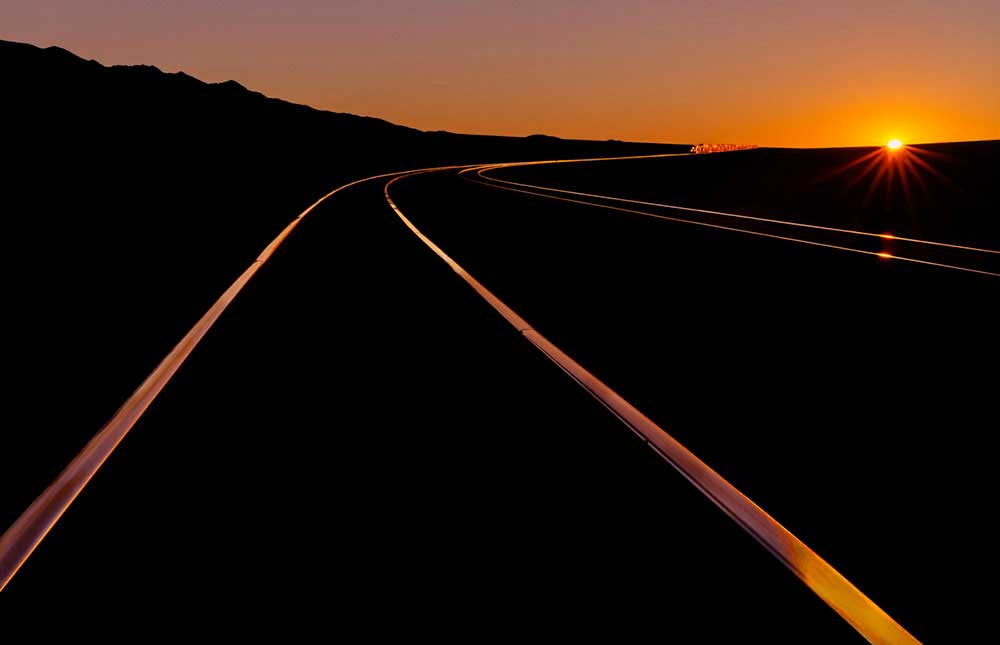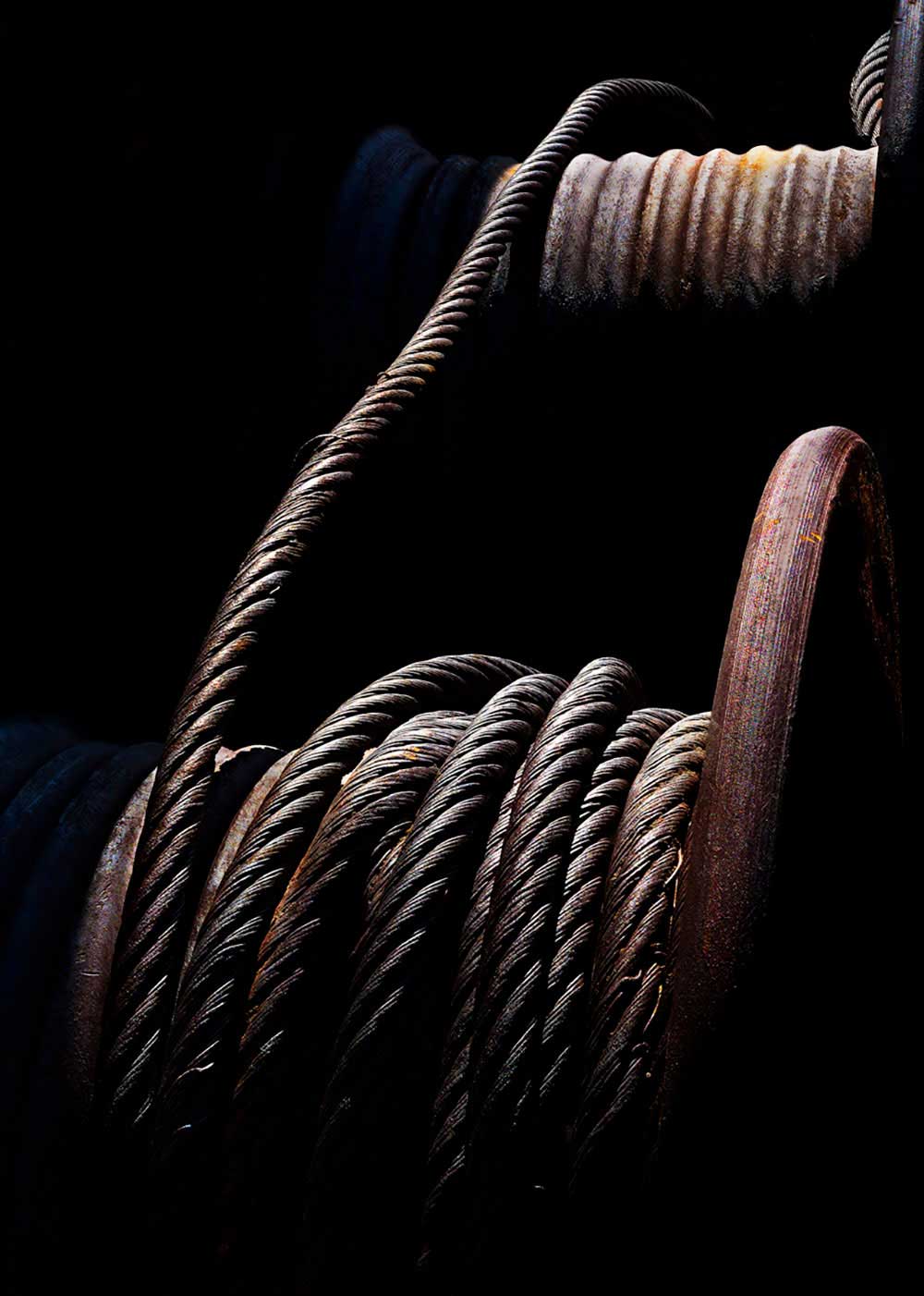The oxidized metals of the Mojave Desert landscape — rusted cans, discarded bolts, conveyor parts, spiraling culverts, and other metallic objects — seem annihilated by the gritty red rust of time.
Yet these remnants have been ‘born again’ as contemporary art photographs through selected light, edgy textures and micro-details, to reveal the beautiful metals that supported desert pioneers as they pursued life, love and riches within this hostile and unforgiving environment.
Ted Rigoni began Oxidized! as a photographic exploration of the Mojave National Preserve. Initially, he wanted to capture the lonely beauty of the desert landscape but discovered instead an oxidized history revealing itself within the ‘left behinds’ of junked cars, abandoned military vehicles, dilapidated mining equipment and destroyed farming implements. Each of these, and more, are a testament to lives lived in a high sun of played-out ore bodies, insufficient water, failed markets and autocratic environmental laws. The metal within the Mojave has experienced its glory and is now vanishing into times past. Abandoned, but now reborn through art, these forms remain as oxidized sentinels to the march of time.
About Ted Rigoni
Ted Rigoni (www.tedrigoni.com, @tedrigoni) is an emerging growth landscape art photographer who resides in southern California. Although fairly new to the subjective and interpretive areas of photography, he has had a camera in his hands since his teen years and as an adult, engages in photographic activities at several professional levels.
At an organic level, Rigoni has long been drawn to the forms and shapes and the geometry that is found within constructed works and throughout nature. His formal education and previous career as a professional engineer helped enable him to view landscapes in a manner that strived to simplify the complex and to present it as impressionistic and interpretive artwork images of our varied western landscapes.
Rigoni’s images depict landscapes in ways that capture mood and feelings of desolation, warmth, beauty, abandonment, comfort, isolation, and the struggle to survive in each particular place and time. Rigoni’s work explores the trunks of cottonwoods, the gold of dust within the Mojave Desert, slanted moonlight and crisp shadows, the sinusoidal curves of man’s creations, all with a recognition that nature and our own hands tell a story of what once was and may still be. Rigoni’s artwork purports to show what we may observe but not see.
His life’s experiences of solving problems of precision confirmed that artistic vision, through photography, unfolds slowly, and only across extended periods of time. His art has grown through intense work in the National Park Photography Expedition’s landscape art program; this program helped him discover who he truly is as an artist, and to expand and clarify his aesthetic for impressionistic images that venture beyond sheer representation of man, nature and things, to images that consciously originate in his mind as representing an Americana Earthscape narrative.
And while he can produce wonderful grand scenic images, his real passion is taking such locales and distilling them into their intimate components, whether through the use of a macro lens and focus stacking techniques, or through long exposures that capture the sense of movement and dynamics he encounters.
As to his photographic ethos, Rigoni’s images capture what he sees in the rural and urban earthscapes that he visits; it is during post-production, however, when his artistic sense takes over and imparts the emotion into the image that he felt at time of capture. [Official Website]



